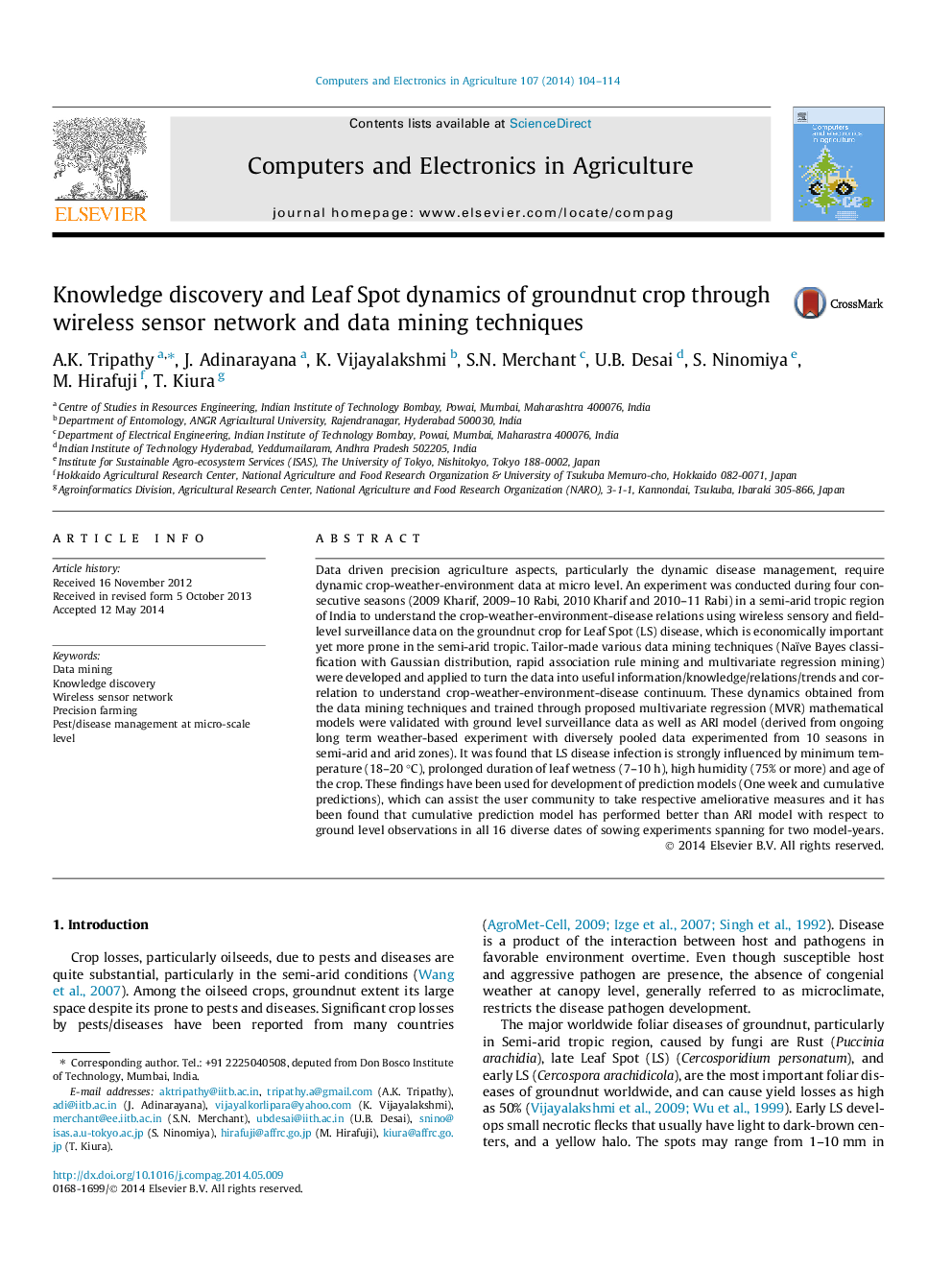| Article ID | Journal | Published Year | Pages | File Type |
|---|---|---|---|---|
| 84327 | Computers and Electronics in Agriculture | 2014 | 11 Pages |
•Multi-mode communication system for real-time remote monitoring of micro-climatic parameters.•Data mining and knowledge discovery of crop disease dynamics with weather and environmental variables.•Multivariate Regression model for Leaf Spot disease dynamics.•Cumulative and non-Cumulative disease predictions models.
Data driven precision agriculture aspects, particularly the dynamic disease management, require dynamic crop-weather-environment data at micro level. An experiment was conducted during four consecutive seasons (2009 Kharif, 2009–10 Rabi, 2010 Kharif and 2010–11 Rabi) in a semi-arid tropic region of India to understand the crop-weather-environment-disease relations using wireless sensory and field-level surveillance data on the groundnut crop for Leaf Spot (LS) disease, which is economically important yet more prone in the semi-arid tropic. Tailor-made various data mining techniques (Naïve Bayes classification with Gaussian distribution, rapid association rule mining and multivariate regression mining) were developed and applied to turn the data into useful information/knowledge/relations/trends and correlation to understand crop-weather-environment-disease continuum. These dynamics obtained from the data mining techniques and trained through proposed multivariate regression (MVR) mathematical models were validated with ground level surveillance data as well as ARI model (derived from ongoing long term weather-based experiment with diversely pooled data experimented from 10 seasons in semi-arid and arid zones). It was found that LS disease infection is strongly influenced by minimum temperature (18–20 °C), prolonged duration of leaf wetness (7–10 h), high humidity (75% or more) and age of the crop. These findings have been used for development of prediction models (One week and cumulative predictions), which can assist the user community to take respective ameliorative measures and it has been found that cumulative prediction model has performed better than ARI model with respect to ground level observations in all 16 diverse dates of sowing experiments spanning for two model-years.
